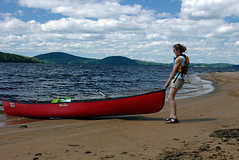 The Jordan River was once one of the most sought after paddles in the Adirondacks. Despite the fact that most of the river is entirely navigable flat water above the first mile of the Class II-IV rapids at it's mouth, it could not be paddled without tremendous risk.
The Jordan River was once one of the most sought after paddles in the Adirondacks. Despite the fact that most of the river is entirely navigable flat water above the first mile of the Class II-IV rapids at it's mouth, it could not be paddled without tremendous risk.
The risk wasn't of dangerous rapids or wild forest, but men with shotguns guarding the mouth and patrolling the banks. The Adirondacks, a 6.5 million acre forest preserve in Northern New York State, are mostly owned by a relatively few groups. Currently a little more than 60% is state land (about 3.5 million acres), "forever wild" by the state constitution, and free for the use of all. This comprises the largest wilderness east of the Rockies, and the entirety of the wild lands within the Blue Line are bigger than Yosemite, Grand Canyon and Yellowstone Parks combined.
Of the 2.5 million private acres remaining most are owned by logging companies, or large hunting and game clubs. For the most part the Adirondacks are still sparsely developed, and wilder today than when Article 14 of the New York State constitution was originally ratified.
Of course, the patchwork of public and private land within the Blue Line can at times create problems. The state has an aggressive land acquisition fund, and pursues purchases of private land, to expand the public holdings within the Blue Line of the forest preserve. The patchy nature of the land rights within the Blue Line can be a problem for the adventurous.
The late Paul Jamison, professor of english and author of Adirondack North Flow, was one of most accomplished modern Adirondack adventurers on waters within the Blue Line. His short but compelling description of the Jordan River's wild nature made me want to paddle it. However, just like in Jamison's day the river was off limits because of the hunting clubs assertion that portage through the rapids and around the dam was illegal since they owned the land surrounding the lower portion of the river.
By common law this assertion is wrong. But by fear of death or imprisonment this assertion still stands today. Many "navigable" Adirondack rivers are off limits because of the landowners assumed power. This is despite the fact that common law states that travel on a navigable river cannot be impeded just because a section is unnavigable. One section (or sections) where a river must be bypassed using the minimum shoreline necessary is entirely legal. And while in most cases if a NYS DEC Ranger is called to the scene the paddlers rights will be upheld, if the NYS Police arrive on scene you might be taken to jail, even if no charges are actually brought.
This fear keeps many stretches of beautiful river free from public use. In Jamison's day, while the hunting and game clubs were active along the lower Jordan River, it was even more compelling.
The landowners actually know they do not have a right to prevent navigation on a navigable river, and it is why every trespassing case has been settled before court. Once in the courts this will be appealed to the state supreme court, where undoubtedly precedent will be set opening the way for not only a few brave paddlers here and there, but an onslaught of paddlers empowered by legal precedent and excited to find new adventures on once forbidden water.
In the case of the Jordan River, the state recently acquired easements, which now allow a legal portage trail from Carry Falls Reservoir to the Jordan River above the dam.
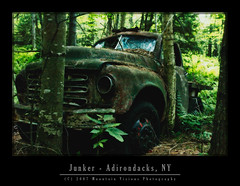 While this carry isn't easy due to it's length it is not a difficult portage. It's around 2.5-3 miles. Lots of ups and downs on a rutted sandy ATV road. Regardless, it certainly beats the alternative of tracking your boat upstream and portaging around the rapids. And certainly beats being shot or arrested for trespassing.
While this carry isn't easy due to it's length it is not a difficult portage. It's around 2.5-3 miles. Lots of ups and downs on a rutted sandy ATV road. Regardless, it certainly beats the alternative of tracking your boat upstream and portaging around the rapids. And certainly beats being shot or arrested for trespassing.
The Jordan River is not for everyone, but it is close to my ideal river paddle. It's about 20 feet wide on average and meanders north and south as much as travels east to west. It's shoreline is filled with giant pines, and lush vegetation. It has many many dead end coves. These coves can be like a river maze, sometimes you make a wrong turn and end up back where you were a few minutes before. At times you turn so sharply you feel like you are looking the at the back end of the boat. And dead fall? Well it's choked with sweepers and strainers. There are times you are lucky if you paddle 5 minutes between obstructions. Each time your precariously exit the boat, onto the downed trees and haul the boat, and it's cargo (about 120lbs) up and over the obstruction. Sometimes giant pines, sometimes smaller trees. Sometimes a combinations of both. Oh, and if you are lucky enough to not have a stretch of dead fall you just might encounter beaver dams one after another.
This might sound terrible but really it's what a wild river is. I'd compare it's scenery with that of the Oswegatchie which is very similar in nature, although a little wider.
While the Oswegatchie is filled with dead fall and beaver dams (last trip we hit 19 beaver dams over 14 miles) it isn't remote. Sure the interior above High Falls, some 14 miles in, is fairly remote, but because of the lack of portaging (it's a car top put in) the river at times can be crowded. Despite the long upstream paddle, any reasonably fit paddler can make it upstream to High Falls in a day, and blow down is often removed or carry trails around the larger strainers and rapids are established. There are also numerous pages of guide book material on the Oz, in contrast to the Jordan, which even in Jamison's book only has about 1 page.
Paddling on the Jordan is an amazing feeling, knowing you will most likely not see another person even if you spent weeks on it. Within a few minutes we saw almost every type of river flora native to the Adirondacks, a water skimming red frog, a great blue heron, snake trails over the sand, and just the beauty of an untrammeled river.
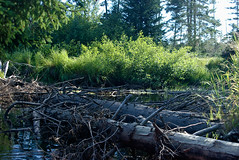 Unfortunately, we also ran into dead falls quite quickly. Our trip up the Jordan only netted us 1 linear mile of hard paddling. Not much cruising beyond the first 1/3 mile. We'd probably have only averaged about 1.5 miles per hour had we kept paddling into the darkness.
Unfortunately, we also ran into dead falls quite quickly. Our trip up the Jordan only netted us 1 linear mile of hard paddling. Not much cruising beyond the first 1/3 mile. We'd probably have only averaged about 1.5 miles per hour had we kept paddling into the darkness.
While we usually get a dawn start for our paddling adventures, Aim's been working a lot of overtime and didn't want to go up Friday night. Unfortunately, Carry Falls Reservoir is about the furthest location from where we live to paddle within the park. About a 2:45 minute drive, so even getting on the road by 6am just doesn't give you enough time for a location you've never been to before.
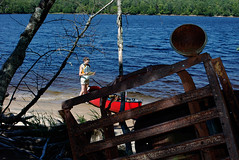 After we located the legal portage which is not currently listed anywhere on the web, nor in a guidebook, and then we scouted it (essentially walking about halfway to the Jordan without the boat), we killed an additional 2 hours. By the time we arrived at the river put-in it was nearly 4pm and we didn't get on the water till 4:15.
After we located the legal portage which is not currently listed anywhere on the web, nor in a guidebook, and then we scouted it (essentially walking about halfway to the Jordan without the boat), we killed an additional 2 hours. By the time we arrived at the river put-in it was nearly 4pm and we didn't get on the water till 4:15.
Caney was immediately at home. He loves these meandering rivers and creeks, complete with the dead falls and all the bugs. He'll swim endlessly chasing surface bugs after working his way up stream against the current and then shooting down with it. Dead falls don't bother him a bit either. Even at 8, those obstacles are the equivalent of a playground to a child.
We decided a little over 1 hour into paddling the Jordan that we were not going to make it very far with the remaining light. And considering the difficulty or the river and the length of the return portage, continuing further on upstream Sunday was not an option. We looked for a campsite on the Jordan but decided to head back to Carry Falls and camp on the beach.
Neither of us wanted to make that portage again that night, but I figured hard work Saturday night would pay off with a day of relaxing Sunday and short paddle out.
It was hard but seemed shorter than the way in, I think largely because it was slightly more downhill. We arrived back at Carry Falls in complete darkness, walking better than half the portage trail by the light of our headlamps. Between searching for the portage route and the actual portage we walked far more than we paddled.
When we got back to Carry Falls we loaded the boat and turned the headlamps off, paddling only by starlight on the perfectly still and silent water. It was a very peaceful way to get back in the boat and finish the active part of our day.
At camp we set up the tent, cooked dinner and watched this stars and meteor showers. Aim hit the sack early. I spent next few hours taking starlight photos in the cool summer evening weather.
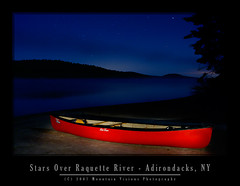 The thing I love about Adirondack summer nights is the fact that unless you are hardy, most nights it's cold enough to wear a nice fleece and maybe even a hat. The bugs are usually long gone when the temps hit 50F and on this clear night on the Raquette it was 49F for the low. I never got cold enough to put on my fleece but I had just about everything else on as I sat on the beach watching the stars while my camera was recording timed exposures.
The thing I love about Adirondack summer nights is the fact that unless you are hardy, most nights it's cold enough to wear a nice fleece and maybe even a hat. The bugs are usually long gone when the temps hit 50F and on this clear night on the Raquette it was 49F for the low. I never got cold enough to put on my fleece but I had just about everything else on as I sat on the beach watching the stars while my camera was recording timed exposures.
Sunday went as planned. Sleep late, swim, eat, swim, lay in the sun, swim, eat, swim, run around the beach, race the dog for the stick in the lake, swim, lay in the sun. While I walked more than I paddled Saturday, I most likely swam more than I paddled Sunday. The dog is fast, but I've got a text book Australian crawl, which is simply more efficient than his dogie paddle.
Packing up in the late afternoon sun and paddling out at a leisurely pace. At times there were so few signs of life from our beach front camp that I'm sure to the few passing paddlers and boaters it looked like our crew drank the coolaid.
When Jamison's description of the Jordan River instantly took hold when we both first saw the Jordan, it was clear this was a river worth the hard work to earn the satisfaction of it's wilderness beauty. I suppose some places charge you a monetary fee for access to the wonders they behold, it's clear the only fee to paddle the Jordan is the determination to put in a long day of hard work.
I'm looking forward to returning to the Jordan, with the foresight of the length of the portage and the difficulty of upstream travel we should have fewer problems paddling far deeper on our next attempt. No doubt it will be difficult, but we've paddled many creeks and outlets equally hard just for the fun of exploration, only to paddle back out the same day. Just the serenity and accomplishment of navigating such a infrequently traveled, remote (by Adirondack standards) and beautiful unspoiled wilderness river will be more than worth the effort when we return.
technorati tags:Jordan River, ADK, Daks, Adirondacks, paddle, paddling, panorama, portage, carry, Carry Falls Reservoir, Raquette, River, star, trails, Star trails, astro photography, night, deadfall, strainer, canoe, expedition, Forest Preserve, Forever Wild, Paul Jamison, Adirondack, North Flow, Old Town, abandoned, decay, wilderness, mountains,Pentax, photography, K10D, Mountain Visions, wilderness conservation
Blogged with Flock








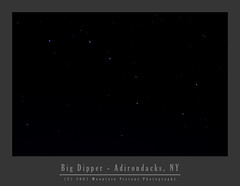




class six at the mouth of the Jordan? wow! Lookin for any good info on Giant conifers in the Oswegatchie preserve area. djcook75@yahoo.com
ReplyDelete